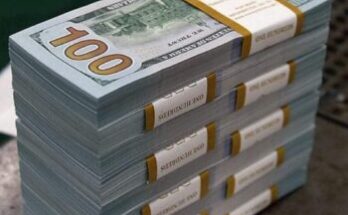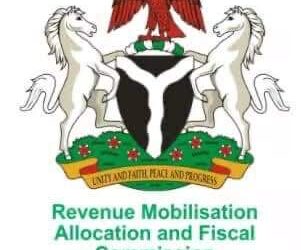The Nigerian Stock Exchange (NSE)”s performance indicators suffered the worse depreciation in its All Share Index (ASI) among its Africa peers, going down by as much as 2.4 per cent. In Africa, performance was mixed as three out of six indices under coverage appreciated during the week.
“The Nigerian All Share index dipped the most, shedding 2.4 per cent Week-on-Week (W-o-W) despite the listing of a telecommunication giant, Airtel Africa. Ghana’s GSE Composite followed as it declined by 2.0 per cent W-o-W while Egypt’s EGX 30 also lost 1.3 per cent W-o-W”, said Afrinvest.
On the other hand, Mauritius SEMDE index gained the most, advancing 0.7 per cent. Morrocco’s Casablanca MASI also gained 0.6 per cent W-o-W and the Kenyan NSE 20 trailed, inching northwards by 0.5 per cent.
The NSE’s loss led the index to settle at 28,566.79 points following losses on four out of the five trading days.
Accordingly, YTD loss worsened to -9.1 per cent. However, market capitalisation rose to N13.9 trillion from N12.9 trillion of the previous week mainly due to the listing of 3.7 billion shares of Airtel Africa valued at N1.4 trillion.
Activity level was mixed as average volume declined -3.5 per cent to 100.1 million units while value traded surged by 39.6 per cent to settle at N1.5 billion.
The most traded stocks by volume were ZENITH (129.5 million units), FBNH (102.7 million units) and WAPIC (90.8 million units) while MTNN (N3.8 billion), ZENIT (N2.5 billion) and GUARANTY (N1.9 billion) were the most traded stocks by value.
The week started off on a positive note, with gains on the first two trading sessions – (up 70 basis points (bps) and 10bps respectively) – as buying interest in the newly introduced AIRTELAFRI drove the market northwards on Tuesday.
However, the All Share Index later reversed gains, down 20bps and 190bps on Wednesday and Thursday respectively due to losses in DANGCEM, AIRTELAFRI, MTNN and NESTLE. Similarly, the market dipped further on Friday as the benchmark index declined by 51bps.
Sector performance was generally poor as only 1 of 6 indices under our coverage closed on a green note. The Consumer goods index led laggards, declining -5.0 per cent W-o-W due to price depreciation in PZ (-10.1 per cent) and NESTLE (-8.9 per cent). The industrial goods index followed, declining 4.3 per cent W-o-W on the back of a loss in CCNN (-4.9 per cent). Oil & Gas and Insurance indices shed-3.1 per cent and -2.4 per cent following selloffs in FORTE (-11.2 per cent), CONOIL (-10.0 per cent), MANSARD (-10.0 per cent) and LINKASSURE (-9.9 per cent) respectively. The Banking Index was the lone gainer, up by 0.8 per cent W-o-W due to buying interest in UBN (+9.5 per cent), UNITY (+4.8 per cent) and GUARANTY (+3.1 per cent).Investors sentiment as measured by market breadth (advance/decline ratio) weakened to 0.4x from 0.5x recorded last week, signaling a decline in market sentiment as 17 stocks advanced against 39 that declined.
The top performing stocks were SOVRENIN (+9.5%), UBN (+9.5% and CADBURY (+8.6%) while FORTE (-23.3%), GLAXOSMITH (-18.6%) and NAHCO (-16.9%) led the losers. We believe that the bearish run would persist as investors maintain a risk-off approach towards investing in the domestic equities market. Nonetheless, we expect that investors would resume bargain hunting due to sharp losses recently.
Meanwhile at the global scene, the recently calm US-China trade relations post G-20 meeting deteriorated this week as President Trump openly disapproved of the speed at which China kept its own end of the deal.
The presidents of US and China reached an agreement which meant that US relaxed restrictions on Huawei in exchange for more agriculture exports to China, but progress has been slow. We believe the uncertainty brought by US-China trade tensions would continue to hang over the global economy in the short term. On a related note, the US Federal Reserve Chairman, Jerome Powell, signaled a likely reduction in interest rate to support economic activity during the Federal Open Market Committee (FOMC) meeting later in July 2019.
Performance in the developed markets was mixed, albeit negatively skewed as only 2 of 7 indices closed in the green W-o-W. The S&P 500 and the NASDAQ indices gained 0.4 per cent and 0.6 per cent respectively on the back of a likely interest rate cut by the US Fed. On the flip side, the Germany’s XETRA DAX index led the laggards with a decline of 2.0 per cent. The Hong Kong’s Hang Seng trailed, halting its extended bullish run as it shed 1.1i per cent. The UK’s FTSE All Share index declined 0.7 per cent due to concerns around a “no-deal” BREXIT.
Similarly, France’s CAC 40 and Japan’s Nikkei 225 shed 0.5 per cent and 0.3 per centW-o-W. In the BRICS markets, performance was lacklustre as only one of the five indices we track advanced W-o-W. Brazil’s Ibovespa index which was the lone gainer posted a gain of 0.3 per cent W-o-W. Conversely, China’s Shangai Composite index led the losers, shedding 2.7 per cent W-o-W on the back of trade tensions with the US followed by India’s BSE Sens which declined 2.0 per cent as the economy continues to reel from US tariffs. Russia’s RTS index and South Africa’s FTSE/JSE indices also lost 0.8 per cent and 0.6 per cent W-o-W respectively.
In the Asia and Middle East region, there was an overall bearish performance as four of five indices tracked declined W-o-W. Turkey’s BIST 100 index appeared the lone gainer, advancing 2.5 per cent W-o-W. On the flip side, the Saudi-Arabian Tadawul ASI led the laggards with a loss of 1.4 per cent despite the release of positive earnings results as well as the removal of the 49.0 per cent limit on foreign ownership of listed companies.
The UAE ADX General index followed, plunging 1.0 per cent W-o-W. Similarly, Qatar’s DSM 20 index declined 0.4 per cent W-o-W and Thailand’s SET index closed relatively flat W-o-W as it declined by 2bps.



